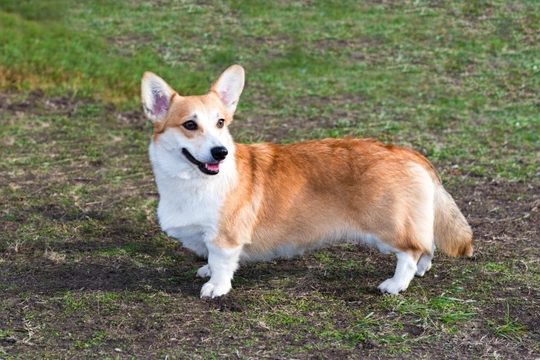
Complete Guide to Progressive Retinal Atrophy (rcd3) Testing
Progressive retinal atrophy (PRA) is a hereditary eye disease in dogs that causes gradual and irreversible vision loss leading ultimately to blindness. Several genetic mutations cause different forms of PRA, and this guide focuses on the rcd3 variant, prevalent especially in the Cardigan Welsh Corgi and Tibetan terrier breeds.
Understanding the rcd3 form is crucial for dog owners and breeders to detect, manage, and prevent this condition through DNA testing and informed breeding choices.
What is Progressive Retinal Atrophy (rcd3)?
PRA rcd3 is a genetic retinal disease characterized by the degeneration of the photoreceptor cells—rods and cones—responsible for vision in dim and bright light respectively. The “3” indicates this specific mutation variant of rod-cone dysplasia.
It results from a mutation in the PDE6A gene, a single adenine deletion, which disrupts production of a key enzyme needed for photoreceptor function. This leads to progressive loss of night vision, followed by day vision deterioration and eventual complete blindness, typically by one to two years of age in affected dogs.
Breeds Most Affected by PRA rcd3
The primary breeds affected by PRA rcd3 include the Cardigan Welsh Corgi and Tibetan terrier. Some sources also report cases in Pomeranians and Chinese Crested dogs, but the condition is most prevalent in the first two breeds.
It is important to note any crossbreeds with lineage from these breeds may also be at risk.
How Does PRA rcd3 Develop in Dogs?
Dogs carrying two copies of the mutated PDE6A gene develop PRA rcd3, which is autosomal recessive. Those with only one mutated gene are carriers who do not develop the condition but can pass it to offspring.
Signs of PRA rcd3 often appear early—sometimes from as early as 6 weeks old—with night blindness as the first obvious symptom. Vision deteriorates progressively and many affected dogs become totally blind by around their first or second birthday.
How to Recognise If Your Dog is Developing PRA rcd3
Early symptoms include difficulty navigating in low light, reluctance to move in dim conditions, and bumping into objects, especially at night. Vision loss gradually affects daytime vision leading to complete blindness.
Because the condition manifests slowly and can be subtle in early stages, particularly in puppies, owners of susceptible breeds should consider genetic testing before symptoms emerge.
Understanding the Genetics of PRA rcd3
PRA rcd3 is inherited in an autosomal recessive pattern, meaning a dog must inherit the defective gene from both parents to be affected. If only one parent passes the gene, the offspring will be carriers but healthy.
Breeding two carrier dogs carries a 25% risk of producing affected puppies, a 50% chance of carriers, and a 25% chance of unaffected, clear puppies.
The Testing Process for PRA rcd3
Step 1: Consult Your Vet
Discuss your dog's breed and family history with your vet. They can assess whether PRA rcd3 testing is advisable and arrange collection of a DNA sample.
Step 2: Sample Collection
A cheek swab or blood sample is usually taken at the vet clinic. The cheek swab is painless and straightforward.
Step 3: Laboratory Analysis
The sample is sent to a specialist laboratory that tests for the PDE6A gene mutation associated with PRA rcd3.
Step 4: Results Interpretation
Test results classify the dog as:
- Clear (Normal): No copies of the mutation, will not develop or pass the disease.
- Carrier: One copy of mutation, healthy but can pass the gene.
- Affected: Two copies, will develop PRA rcd3 and progressive blindness.
Why Testing is Essential for Responsible Breeding
Testing breeding dogs prevents pairing two carriers, reducing affected litters. Responsible breeders use test results to inform mating decisions, helping reduce the prevalence of PRA rcd3.
Early identification also allows owners to prepare for managing vision loss, adapting the dog’s environment, and providing supportive care as needed.
Additional Resources and Support
For UK dog owners wishing to test for PRA rcd3, the Kennel Club’s DNA testing list provides a detailed directory of approved laboratories.
Getting involved with breed clubs and health programmes can also offer ongoing support and updated information on managing hereditary conditions like PRA.
Conclusion
Progressive retinal atrophy rcd3 is a serious inherited eye disease affecting mainly Cardigan Welsh Corgis and Tibetan terriers, leading to blindness. Through early DNA testing, owners and breeders can identify affected and carrier dogs to make responsible breeding choices and prepare for managing the condition.
Understanding this condition and testing options helps protect future generations from blindness and improves overall breed health.
Remember, responsible ownership and ethical breeding practices are key to tackling inherited diseases and ensuring our pets live healthy, happy lives.



